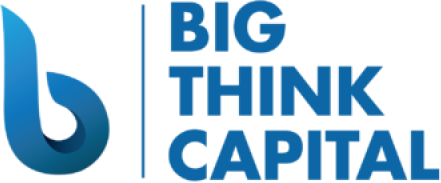Navigating the New Normal: How to Leverage SBA Loans and Working Capital to Offset Inflation Impacts on Small Businesses
Estimated Reading Time: 6 minutes
- Understand the impact of inflation on small businesses.
- Learn about the benefits of SBA loans and the application process.
- Discover how working capital advances can support business cash flow.
- Explore real-world examples of businesses successfully navigating inflation.
- Implement strategic financial planning to prepare for economic challenges.
Table of Contents
- Understanding the Inflation Impact on Small Businesses
- The Role of SBA Loans in Mitigating Inflation Implications
- Key Steps to Secure an SBA Loan
- Utilizing Working Capital Advances to Combat Inflation
- Finding Funding Solutions with Big Think Capital
- Real-world Examples of Businesses Overcoming Inflation Challenges
- Final Thoughts
Understanding the Inflation Impact on Small Businesses
Inflation can erode purchasing power, increase operational costs, and hinder profitability. Here are some specific impacts inflation can have on small businesses:
- Increased Costs: Rising prices for materials and labor can squeeze profit margins, making it harder for businesses to keep up with expenses.
- Consumer Behavior Shifts: Higher prices may lead consumers to reduce spending, impacting revenue.
- Supply Chain Challenges: Supply chain disruptions often accompany inflation, causing delays and increases in costs for essentials.
Understanding these challenges is the first step in developing strategies to counteract their effects.
The Role of SBA Loans in Mitigating Inflation Implications
SBA loans provide small businesses with access to affordable financing. The U.S. Small Business Administration (SBA) offers various loan products aimed at supporting business growth and development. These loans come with benefits that can be particularly advantageous in times of inflation.
Benefits of SBA Loans
- Lower Interest Rates: SBA loans typically have lower rates than conventional loans, making it easier to manage financing costs during inflationary periods.
- Longer Repayment Terms: These loans offer extended repayment periods, which can ease the monthly financial burden on borrowers.
- Flexible Use of Funds: SBA loans can be used for various purposes, including working capital, purchasing inventory, or managing operational expenses.
Key Steps to Secure an SBA Loan
Securing an SBA loan may appear daunting, but breaking down the process into manageable steps can simplify it. Here are the key actions to take:
- Understand Eligibility Requirements: Before applying, familiarize yourself with the eligibility criteria. This includes being a for-profit business, meeting size standards, and demonstrating the ability to repay the loan.
- Gather Necessary Documentation: Common documentation includes tax returns, financial statements, a business plan, and a personal credit report. Having this information ready can expedite the application process.
- Choose the Right SBA Loan Program: Options include the 7(a) loan program for general purposes, the CDC/504 program for real estate, and the microloan program for smaller funding needs. Choose based on your specific business needs.
- Connect with an SBA Lender: Identifying banks or lending institutions that specialize in SBA loans is crucial. Platforms like Big Think Capital can help connect you with lenders who understand your requirements.
- Submit Your Application: Once you have selected a lender, submit your application along with all required documentation.
Utilizing Working Capital Advances to Combat Inflation
In addition to SBA loans, working capital advances are another financial tool entrepreneurs can leverage. Unlike traditional loans, working capital advances provide immediate access to funding based on future sales.
Advantages of Working Capital Advances
- Quick Access to Funds: These advances can be processed and funded much quicker than traditional loans.
- No Restrictions on Use: Funds can be used for various purposes, from covering payroll to managing overhead costs.
- Flexibility in Repayment: Repayment is typically tied to sales, meaning payments adjust with revenue variations, which can be helpful in fluctuating markets.
Finding Funding Solutions with Big Think Capital
At Big Think Capital, we specialize in helping small businesses navigate their financing options. We can assist with securing SBA loans and working capital advances tailored to your specific circumstances. Here are a few insights on leveraging these funds effectively:
- Create a Budget: It is essential to craft a budget that incorporates the potential rise in costs due to inflation. Use funding to cover increased operational expenses or other unforeseen costs.
- Invest in Efficiency: Consider using loan funds to invest in technology or training that streamlines operations and improves efficiency. This can help offset the impact of rising costs on your business.
- Build Cash Reserves: Use the proceeds from working capital advances to establish a cash reserve. This reserve can act as a buffer to navigate any future economic uncertainties.
Real-world Examples of Businesses Overcoming Inflation Challenges
To illustrate how these financial tools can help, consider these examples of small businesses that successfully leveraged SBA loans and working capital advances:
- Retail Store: A local boutique used an SBA 7(a) loan to expand its product line amid rising material costs. By securing lower interest rates, the owner kept monthly expenses manageable while providing new products that attracted customers.
- Restaurant: A neighborhood restaurant utilized a working capital advance to purchase inventory before a price hike. The advance allowed the owner to stock up on supplies and maintain pricing for customers, resulting in increased sales.
Final Thoughts
Inflation presents a unique set of challenges for small business owners, but it is possible to navigate these obstacles with strategic financial planning. Leveraging SBA loans and working capital advances can provide the necessary resources to manage rising costs and ensure operational stability.
Practical Takeaways for Business Owners
- Prepare documentation ahead of time to expedite the loan application process.
- If you are ready to take the next step in securing funding for your small business, visit bigthinkcapital.com or speak with one of our funding experts. We are here to guide you through the financing process and help you establish a resilient financial strategy in today’s unpredictable economy.
FAQ
What are SBA loans?
SBA loans are financial products backed by the Small Business Administration that help small businesses access affordable financing.
How can working capital advances help my business?
Working capital advances provide quick funding based on future sales, allowing businesses to address immediate financial needs without long wait times.
What should I include in my SBA loan application?
Key documents include tax returns, financial statements, a business plan, and a personal credit report to demonstrate your business’s financial health and repayment capability.






